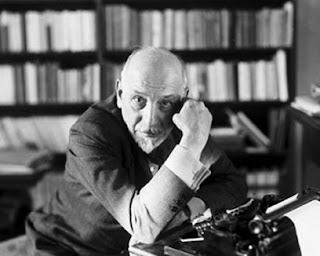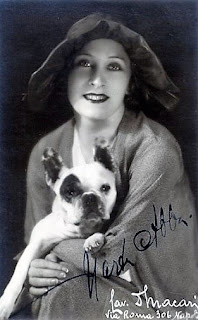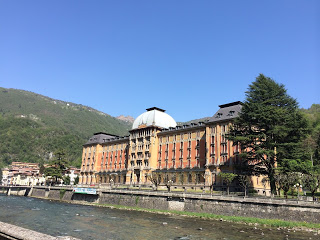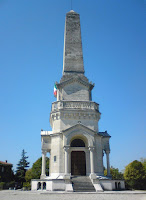Key figure in capture and execution of Mussolini
 |
Giuseppina Tuissi came from a strong
anti-fascist background near Milan |
Giuseppina Tuissi, who was among a group of partisans who captured the deposed Fascist leader Benito Mussolini as he tried to escape to Switzerland in 1945, was born on this day in 1923 in Abbiategrasso, near Milan.
Tuissi and her comrades seized Mussolini at
Dongo, a small town on the shores of Lake Como, on April 27, 1945, along with his mistress Claretta Petacci. Having heard that Hitler was preparing to surrender to the Allies, Mussolini was trying to reach Switzerland before flying on to Spain in the hope of finding refuge under Franco’s nationalist dictatorship.
He and Petacci and their entourage were executed at the village of
Giulino di Mezzegra the following day before the partisan group took their bodies to be put on public display in Milan.
Tuissi, however, would herself be killed less than a couple of months later, probably at the hands of fellow partisans who suspected her of betraying comrades during a period earlier in the year in which she had been held captive and tortured by Fascist militia and handed over to the Nazis but was then released.
Although she was born
Abbiategrasso, about 30km (19 miles) southwest of Milan, Tuissi lived and worked in
Baggio, a suburb of Milan. Her father Umberto, a blacksmith, her brother Cesare and boyfriend Gianni were active anti-fascist militants and members of the resistance movement.
In 1943, Tuissi became active in the movement, operating as a courier under the pseudonym Gianna. Despite being small in stature and slight in build, she became known for her courage.
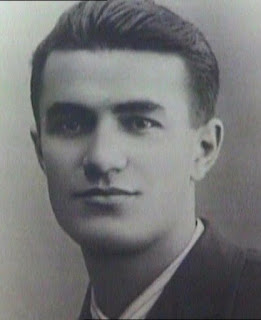 |
Luigi Canali, otherwise known as Captain Neri,
with whom Tuissi had a close bond |
Her attitude towards the Fascists, who remained in control of the puppet
Republic of Salò (also known as the Italian Social Republic) even after the Allied invasion, hardened after her boyfriend was captured and murdered by Fascist thugs.
She teamed up with the partisan Garibaldi Brigades, becoming a close associate of
Luigi Canali, who operated under the pseudonym Captain Neri, and began plotting attacks on Fascist and German forces.
But they came under the surveillance of Mussolini’s secret police and were seized in the village of
Lezzano by Fascist militia in January 1945, taken to a prison in Como and subjected to torture. Soon after being transferred to the German SS headquarters in
Monza, where she was further tortured, she was released.
There has been speculation about why she was allowed to leave, ranging from a gestapo officer deciding to spare her after being struck by her bravery, to being allowed to leave so that she could be followed by SS officers and would lead them to Canali, who had managed to escape from prison.
It is said that she was offered the chance to flee to Switzerland but declined, preferring to remain in Italy to continue the work of the resistance.
However, the suspicion that she and Canali had betrayed their fellow resistance fighters while in captivity remained, even resulting in a death sentence being handed down by a
“People’s Tribunal” , although their closest comrades in the
52nd Garibaldi Brigade ignored it, welcoming them back. Their leader appointed Canali to the rank of captain.
 |
A small cross on a wall in Giulino di Mezzegra marks the spot
at which Mussolini was killed by Tuissi and her comrades |
The day after the Mussolini execution, however, Tuissi was arrested in Baggio and held until May 9, during which time she was interrogated by
Pietro Vergani, regional commander of the Garibaldi Brigades and a member of the Italian Communist Party. She was told that Canali had been executed.
Disillusioned and saddened by the death of her close colleague, she and Canali’s sister went to Milan to confront Vergani, demanding to know the circumstances of his death. Despite threats, Tuissi continued to ask questions and arranged to meet the editor of a daily newspaper in Milan.
She disappeared on April 23, 1945, her 22nd birthday. What happened to her has never been established but the suspicion is that her body was thrown into Lake Como at Cernobbio. This was backed up by the evidence of witnesses who saw two men and a girl arrive on a motorcycle at the lakeside in the town at around 9pm, heard shots and the sound of something hitting the water, then saw the motorcycle leave with the two men but no girl.
Four men were arrested, including Vergani and
Dante Gorreri, the Communist Party secretary for Como, but all were released because of procedural irregularities.
 |
| The Visconti castle at Abbiategrosso in Lombardy |
Travel tip:
Tuissi’s town of birth,
Abbiategrosso, has a fine 14th century castle built by Gian Galeazzo Visconti and a basilica dedicated to Santa Maria Nuova that was built to celebrate the birth of Gian Galeazzo’s son, but its more recent claim to fame is as a prominent member of the Cittaslow movement, an offshoot of the Slow Food movement, which promotes a calm way of life and a spirit of neighbourliness. It has attracted many Milanese to buy property there to escapes the pressures associated with city life.
 |
| The sumptuous Villa d'Este on Lake Como at Cernobbio |
Travel tip:
Cernobbio is known because of the presence of the Villa d’Este, the vast complex built as a 16th century summer residence for the Cardinal of Como, but it is only one of many fine villas fronting the water. The town once attracted large crowds hoping to catch a sight of movie star George Clooney, who had a house at nearby
Laglio and would occasionally be spotted at a cafe in Cernobbio. Scenes from the movie
Ocean’s 12, in which Clooney starred, were filmed locally. The place still has a neighborhood feel to it, especially on summer evenings and weekends when the main piazza is full of families and couples.
Home





